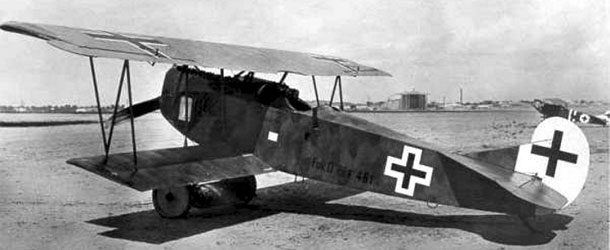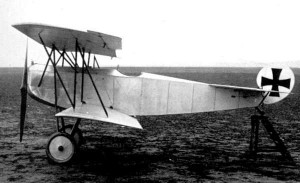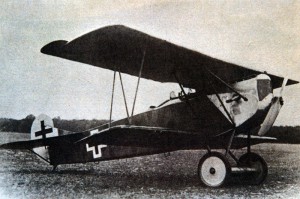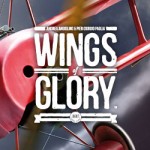Four new WW1 fighters are arriving in the Wings of Glory game: the Fokker D.VII, Sopwith Snipe, Roland C.II, and Airco DH.4. This series of preview articles presents these aircraft and the versions featured in the WW1 Wings of Glory Airplane Packs, starting with the German single-seat biplane, the Fokker D.VII. Successor of the famous Fokker Dr.I , it is often mentioned as the best fighter aircraft of the first World War.
In late 1917, the German aviation needed a new fighter to match the Allied S.E.5 and Spad, to regain air superiority. The Idflieg launched a competition among manufacturers for prototypes of single-seat fighters, to be demonstrated and test in January 1918, at Adlershot airfield, in Berlin. The best design would be awarded a production contract.
Fokker submitted the V11, an experimental biplane Reinhold Platz was working on at the time. The V-series of experimental planes was started in 1916 by Fokker’s chief designer, featuring a cantilever-winged sesquiplane. The V11 was the latest prototype of this series, using a fuselage similar to the Dr.I with a modified tail. It was fitted with a standard Mercedes D.IIIa engine. At Adlershot, it was flown by Manfred von Richthofen, who pointed out some flaws (specially on diving). These were corrected in time to get the ace's approval of the excellent performance, safety, and ease of flying. The V11 won the competition and Idflieg designated it D.VII, with an immediate provisional order for 400 aircraft.
Fokker factory was not able to meet the demand for the new fighter, so it was also produced under license by Albatros. Within three months of the competition, the D.VII entered service, armed with two synchronized Spandau 7.92mm machine guns. It appeared on the Western Front in April 1918, in about 45 German fighter units. Highly maneuverable, swift, and nimble, it quickly proved a match for Allied fighters and became known for making an ace out of many pilots who flew it.
The fuselage construction was box-girder, of welded and braced steel tube, covered with metal forward, plywood and fabric at the rear. The single-bay wings were wooden, two box-spar units, using N-form interplane struts with no external wire bracing. The power plant was originally a Mercedes D.III 6-cylinder water-cooled in-line piston engine providing 120 kW (160 hp), but there were units powered with the Mercedes D.IIIa (130.5 kW /175 hp) and with the BMW IIIa (137.95 kW, 185 hp). Equipped with the BMW engine, the D.VII could out climb any Allied opponent it encountered in combat.
After introduction into the squadrons, the D.VII demonstrated some problems with its wing structure, causing three planes to crash after wing ribs fractured during dives. This was rectified, placing the fighter in service again. High temperatures sometimes ignited planes armed with phosphorus ammunition or caused their gas tanks to explode.
But, the D.VII got over these issues, winning approval and respect both from German and Allied pilots for its agility, good performance, handling (even at high altitude), and its capacity to hang on its propeller (allowing pilots to fire upward when other fighters would have stalled and entered a spin). In August 1918, it contributed the major part of the 565 victories scored by the German Air Force.
By the end of World War I, more than 700 D VIIs had been delivered. Fokker produced 366 aircraft, most coming from Albatros. Production did not end until several years after the war, and postwar power plants imbued the D.VII with splendid performance, so it sold well even in a world cluttered with cheap surplus fighters. In the post war, it was operated in 12 countries. The total number of units produced is estimated at almost 2,700 according some sources, or about 3,300 for others.
The Fokker D.VII was the only aircraft to be specifically mentioned in the Armistice Agreement, specifically requiring all fighters of that type be immediately surrendered. More than 100 were smuggled out of Germany, to prevent their seizure by the Allies.
Information sources: Military Factory, Wikipedia, The Aerodrome, www.all-aero.com, Century of Flight.











Follow Us on